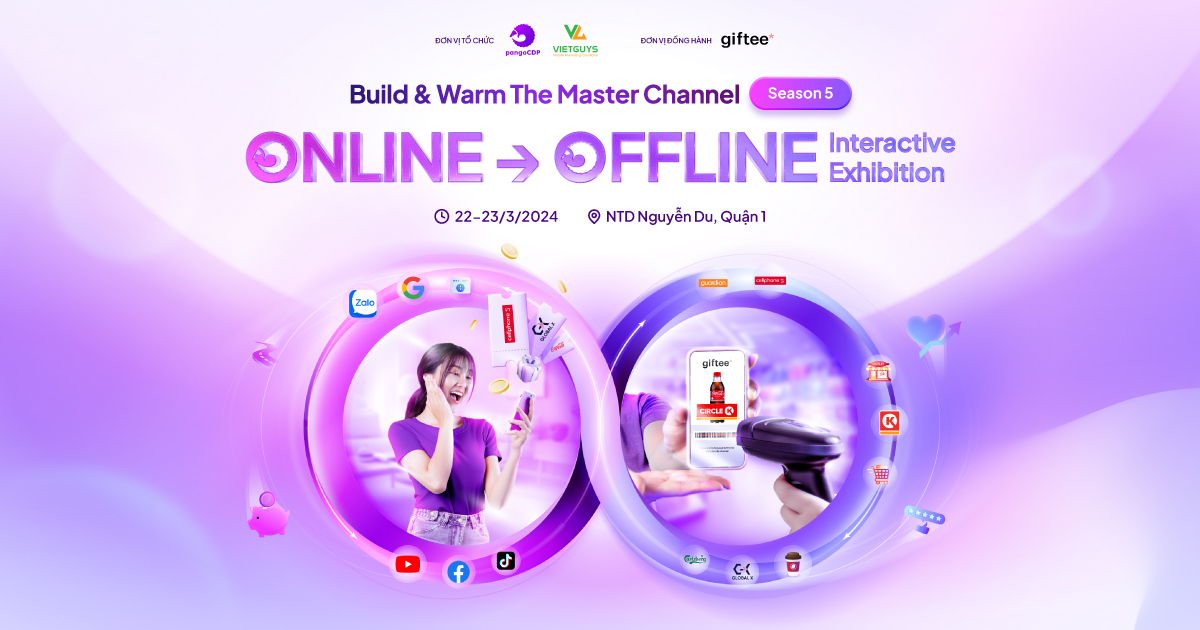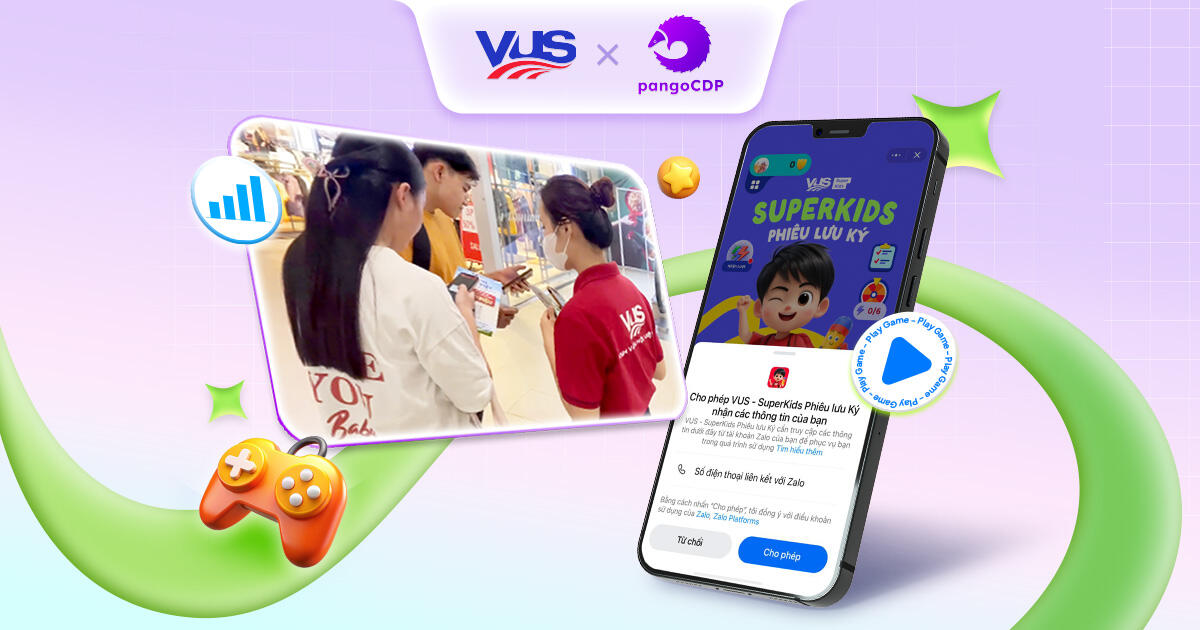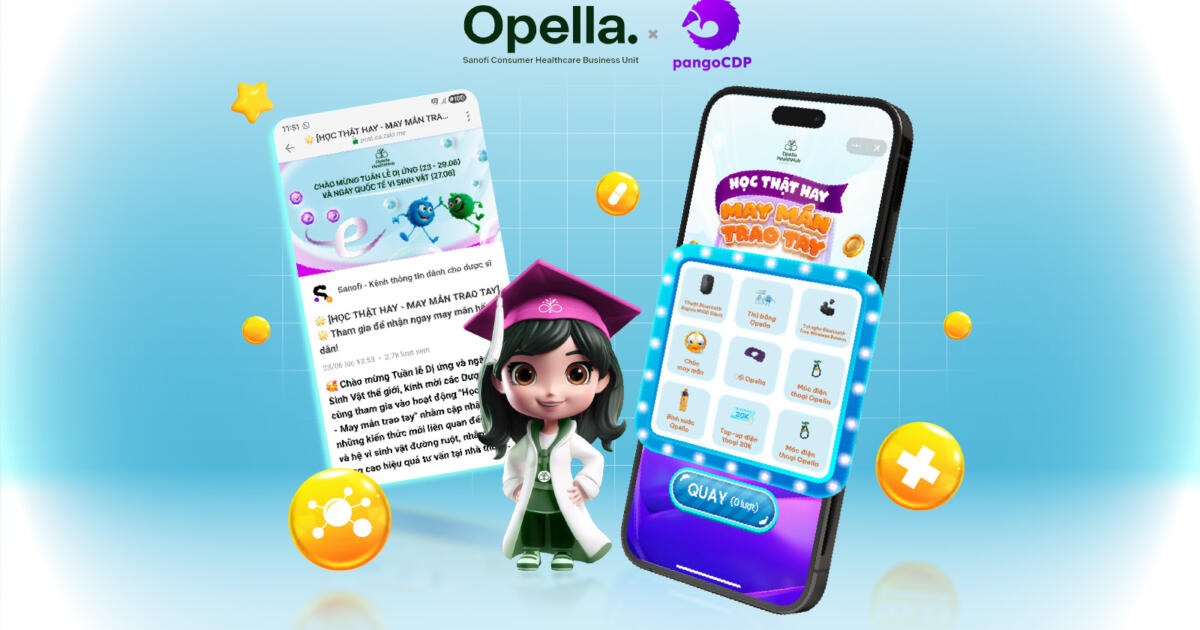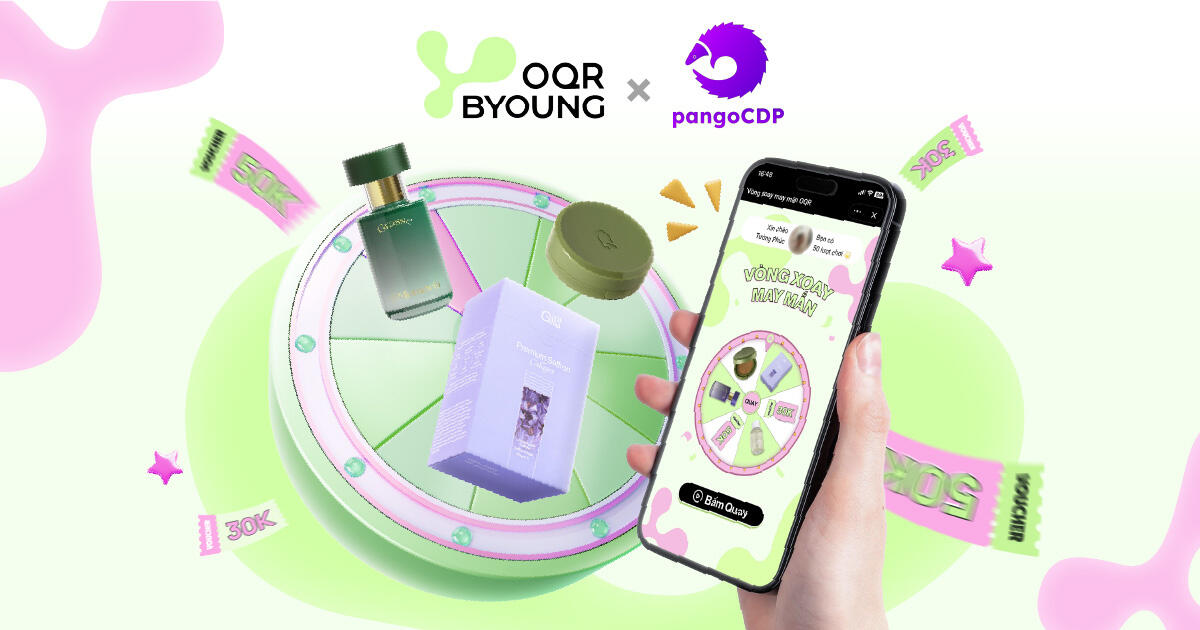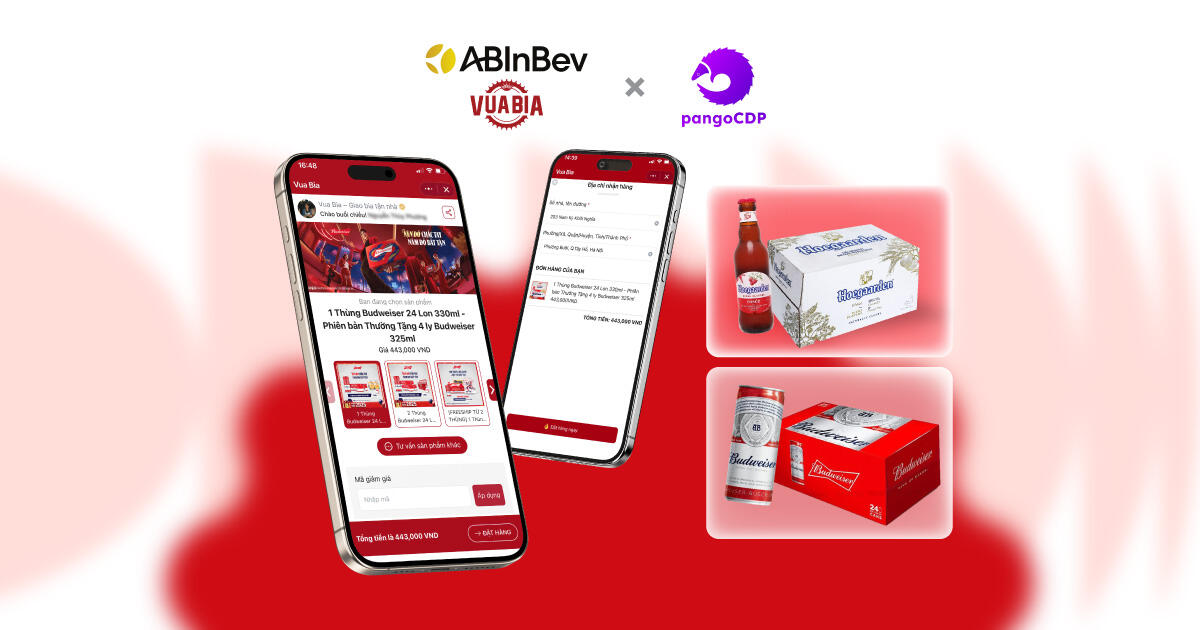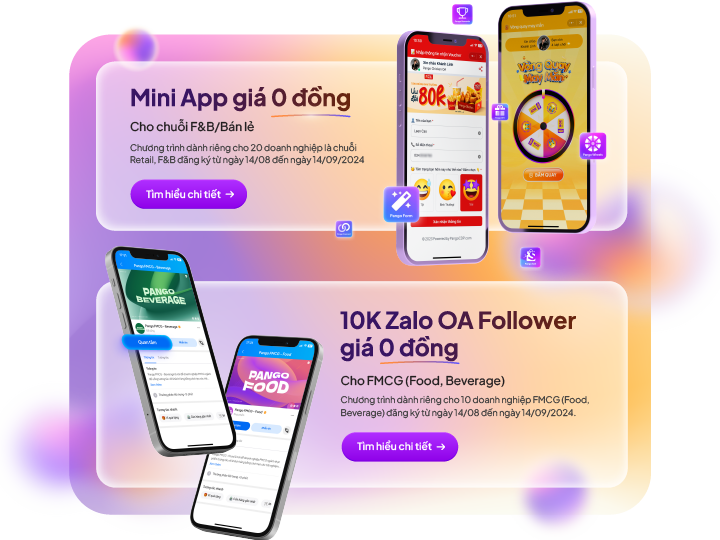Nowadays, it is very common for consumers to search for products online and then visit a store to experience and purchase those products or their alternatives. As a result, store sales are always higher, even though online advertising is typically the driving factor attracting customers to visit, which is also the reason why the O2O model has emerged. So what is O2O? What are businesses’ expectations for this model, and does reality meet expectations? Let’s find out in the following article.
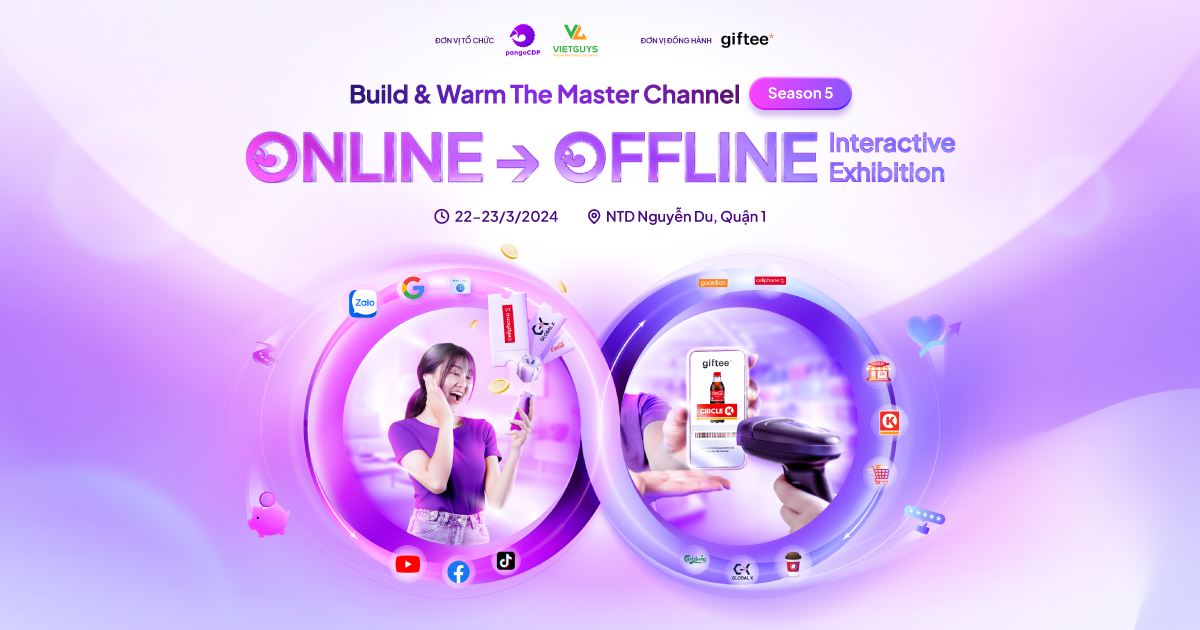
What is O2O?
O2O (Online to Offline) is a business model that combines online and offline activities to attract and stimulate customer demand for products and services through online channels, then draw them to physical stores to experience and purchase.
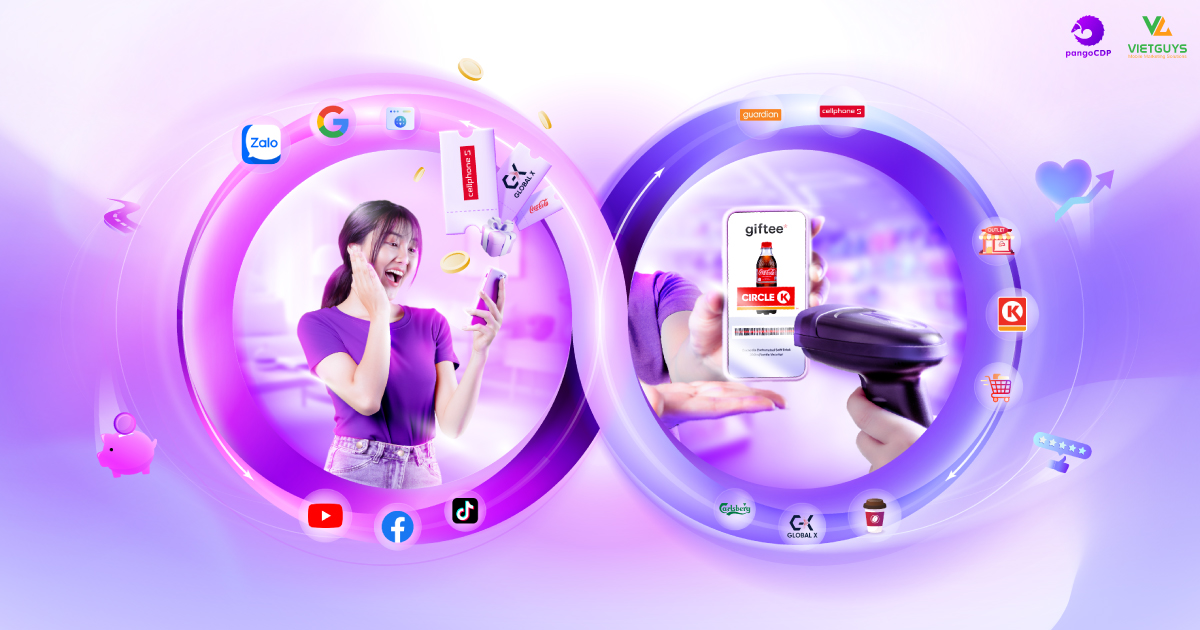
Some common O2O activities include:
- Customers search for information on a website, then visit a store to experience and purchase the product.
- Customers make reservations at restaurants, hair salons, spas, or movie theaters through an app or website, then experience the service at the physical location.
- Receiving vouchers from brands through a social media platform and using those vouchers at stores.
The O2O model is considered an essential trend in today’s era because it not only creates a comprehensive shopping experience for customers but also offers businesses the ability to easily reach potential customers, expand the market and optimize sales opportunities.
Why Should Businesses Implement the O2O Model?
According to a study by GE Capital Retail Bank, over 80% of customers typically search for product information online before making a purchase in-store. They may read reviews, consult opinions from influencers, or trusted community sites to make accurate decisions. Therefore, the online shopping experiences have become an indispensable trend and habit for many consumers today, especially with the explosion of e-commerce platforms like Shopee, Tiki, Lazada, and others.
However, some businesses focus too much on selling solely in physical stores. This limits their ability to reach potential customers and sales opportunities. Selling is no longer just about having a product displayed in a store and waiting for customers to come; it requires seamless integration with online advertising platforms to stimulate customer needs and emotions. In today’s era, if businesses are not present on online channels, they are depriving themselves of their competitive advantage against competitors.
On the other hand, many businesses focus too much on their online sales systems, neglecting the importance of offline stores. One of the most crucial factors for customers to consider when choosing a product is the real experience. Customers are always cautious and distrustful of the quality of online products. Therefore, the habit of “seeing is believing” is still deeply ingrained in the minds of the majority of Vietnamese consumers.
Therefore, with O2O, businesses will optimize both of these forms. The mutual support between online and offline forms is the key to business success.
The online form provides customers with necessary information about products and services, increasing brand awareness, and enhances convenience and flexibility in the shopping experience. The offline form allows customers to experience products and services directly, giving them a clearer view of the product’s quality and features, increasing the motivation to shop. Additionally, it allows businesses to have direct interaction with customers, increasing customer engagement and satisfaction.
Most importantly, the O2O model will help increase customer traffic to the store, thereby boosting business revenue.
Businesses’ Expectations for the O2O Model and Reality
Recognizing the value of O2O, businesses have placed high expectations on this model, specifically:
- Controlling Advertising Budget: Identifying which advertisements and channels are most effective in driving customers to the store and making purchases brings significant value to businesses, enabling them to control and optimize advertising budgets.
- Aggregating Customer Data: Instead of merely receiving basic reports on the status of “ordered” or “canceled,” businesses expect to capture comprehensive customer data throughout the journey from online to offline. Starting when customers view and click on ads, visit the website, search for product/service information, use vouchers, and visit the store, all these data help businesses have a better understanding of customer behavior to optimize the shopping experience.
- Increasing Revenue and Profit: Above all, businesses expect to enhance business performance by attracting online customers and converting them into loyal customers, increasing sales, optimizing profits, while also strengthening competitiveness in the market.
Businesses have high expectations for the O2O model, but turning these expectations into actual value is not easy.
Many business owners are excited about being able to identify which advertisements drive sales and which need to be eliminated to optimize budgets. However, when the initial excitement quickly fades, business owners often face the reality that increasing the number of customers visiting stores from online channels is not simple. Although numerous adjustments have been made, results remain limited.
Moreover, many businesses are still struggling to synchronize their database systems between online and offline channels. Disjointed data across channels leads to challenges in consolidation and data retrieval, making it difficult for businesses to accurately capture customer insights.
From this, it can be seen that implementing O2O in practice is not simple. And one of the determining factors of a business’ success or failure is “technology.” When managing multiple sales channels simultaneously, businesses cannot control each channel separately with different data systems but need a technology system to unify data, identify, segment customers, and especially automate the process of setting up appropriate customer engagement scenarios. Ultimately, optimizing the shopping experience cannot rely solely on humans but also requires technological support.
The Master Channel and PangoCDP – The Intersection of Expectation and Reality
Businesses can fully realize these expectations by investing more in customer interaction with the idea of building The Master Channel, combined with the PangoCDP.
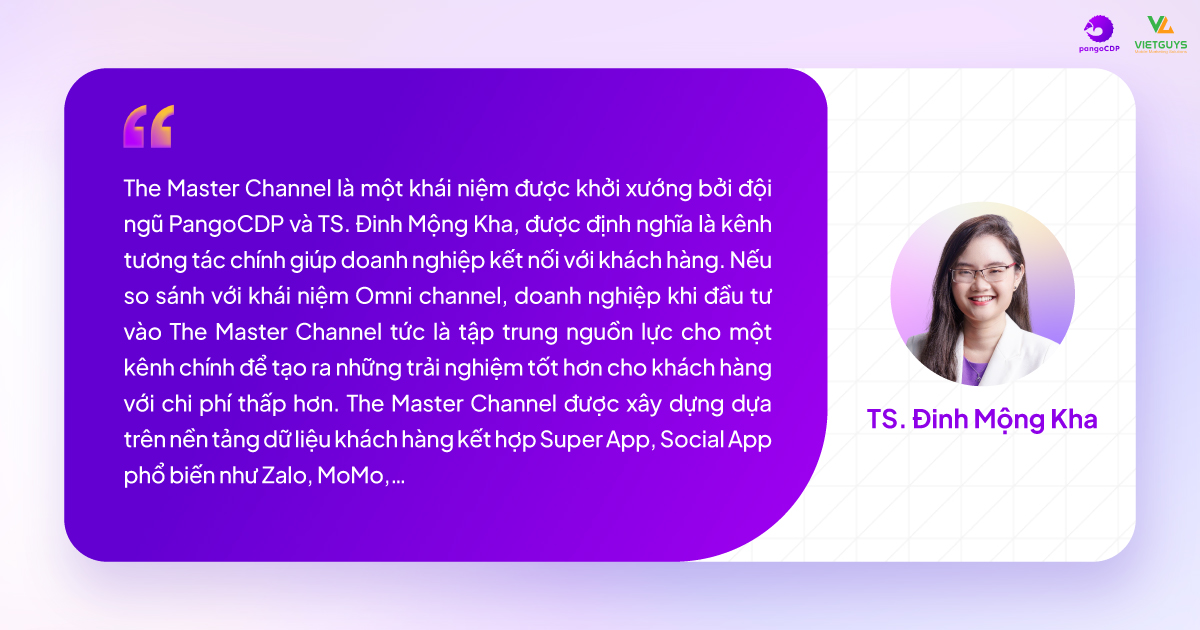
Returning to the two biggest challenges when deploying O2O, which are how to attract more customers to the store and manage data effectively. We suggest the following methods:
Issuing Vouchers with The Master Channel
Vouchers are considered the “secret weapon” of retailers in creating excitement for shopping and boosting sales.
Unlike traditional methods of sending vouchers via SMS, email, etc., which can be dull and boring, vouchers issued through The Master Channel will be “made up” with emotions, personality, and the brand’s unique identity.
Customers can easily receive vouchers by simply clicking on any advertisement banner on the website or social media platform of the brand or by clicking on the link in the message, and the voucher will be sent directly to the customer’s Zalo.
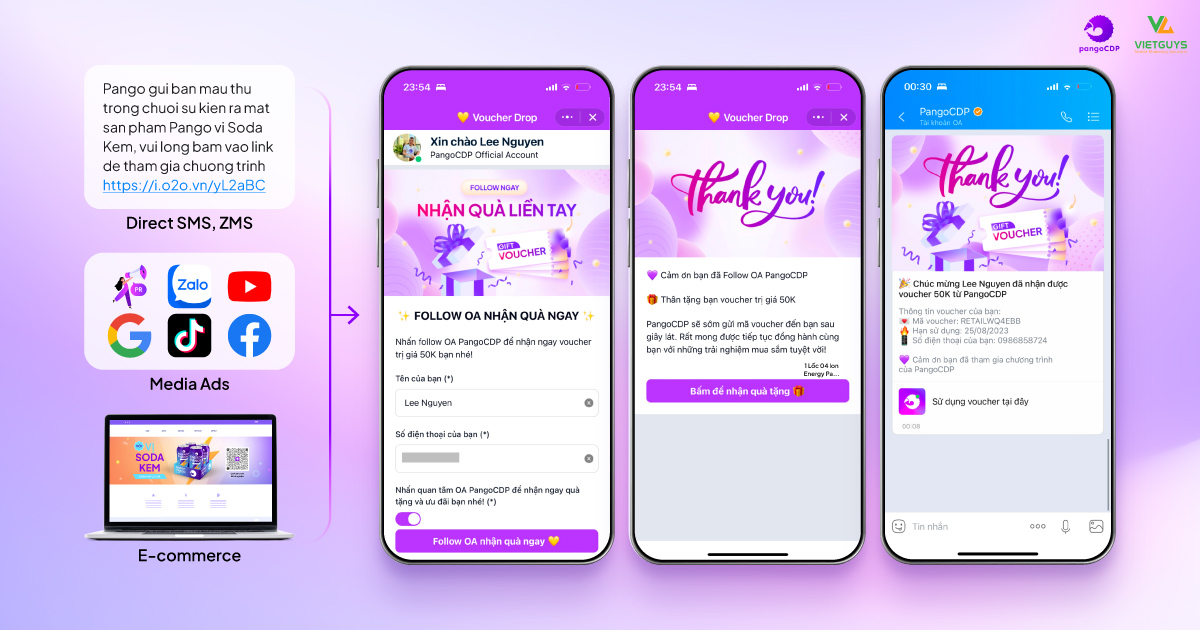
To stimulate and motivate customers to claim vouchers, businesses can also integrate with the gaming system proposed by The Master Channel. Using gaming mechanics such as scores, badges, leaderboards, and rewards, games create an engaging experience for customers and emphasize the voucher’s value when users have to strive to overcome the game’s challenges and compete with other players to obtain it. This also encourages users to use the voucher to shop at the store.
These games are all available and integrated into the Mini App on Zalo. Users only need to scan the QR Code or access the link in the brand’s advertising content. Then, they can easily “join the club” without downloading any new apps on their phones and going through numerous complex login steps.
With The Master Channel, businesses can innovate and diversify ways to distribute vouchers to stimulate consumer use and shopping at the store.
Especially with the support of the PangoCDP, all customer behaviors from clicking on advertisement banners, playing games, or receiving vouchers to use at the brand’s stores,etc., will be fully recorded. PangoCDP will consolidate customer data throughout the journey, automatically segment customers, and set up the next customer engagement scenarios for businesses.
Online Surveys and Issuing Vouchers to Bring Customers Back to Offline Stores
Surveying customer satisfaction after each product or service experience is considered a way for businesses to create engagement and show care for customers.
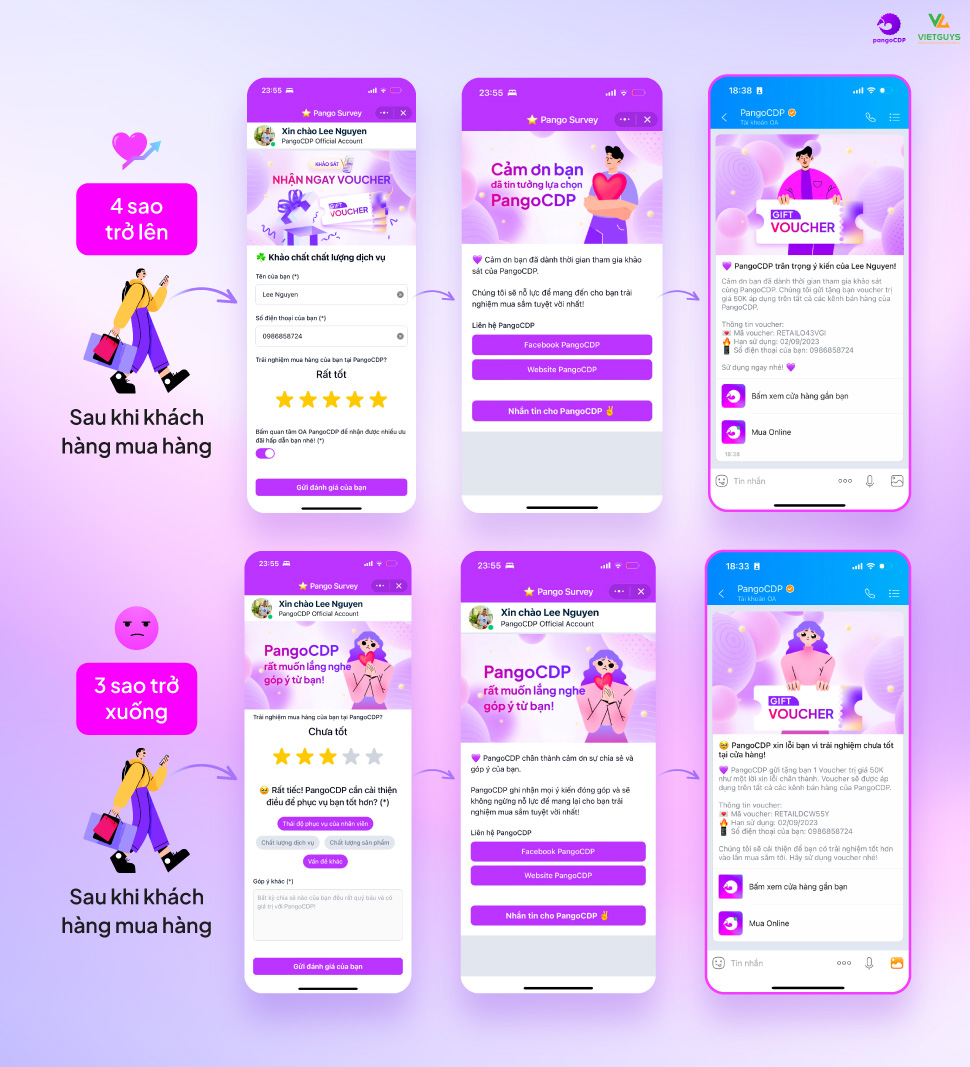
A fashion brand has implemented this solution and received quite positive feedback from customers. Upon receiving customer purchase information, the brand immediately sends a survey form to customers via Zalo messages. For feedback below 3 stars, real-time data is sent back to the customer service department, and relevant departments will handle it within 24 hours. This has helped them maintain customer satisfaction.
Reminding Member Benefits to Attract Customers to the Store
Reminding customers to use their loyalty points not only contributes to improving sales but also fosters a connection with loyal customer groups. The Master Channel supports this Loyalty activity right on Zalo.
Customers can view their accumulated points, and the system will automatically send notifications when customers are about to upgrade tier or when their points are about to expire without needing to install additional loyalty apps or create new accounts.
Through PangoCDP’s data report on interaction frequency, businesses can evaluate and come up with more specific scenarios to boost purchasing motivation.
Online to Offline Interactive Exhibition
The return of “Build and Warm the Master Channel” – season 5 will go beyond the typical “talk & talk” or “booth & booth” formats. The “Online to Offline Interactive Exhibition” is a direct interactive exhibition with a series of continuous demo scenarios, simulating the shopping journey and data flow from Online to Offline, taking place over two days.
Guests will experience the role of customers for FMCG brands, retailers, F&B, services,etc. With PangoCDP and “The Master Channel,” business owners and marketers will gain insight into the data journey, mastering technology to build sustainable connections with customers.
Register to attend the event here: https://i.o2o.vn/tPFF
